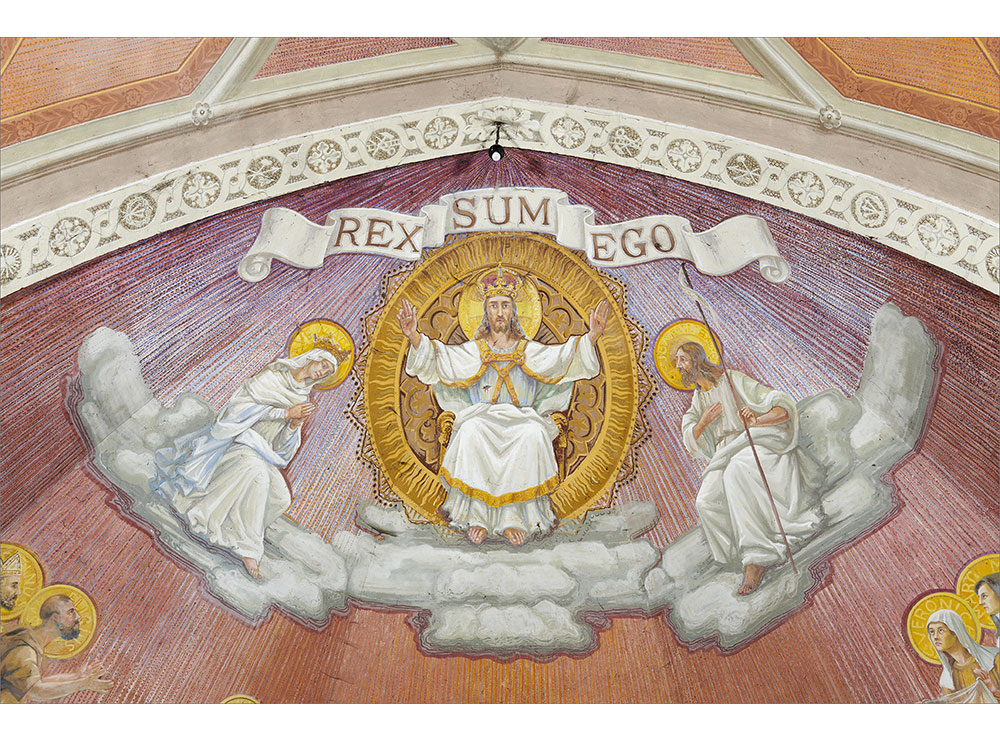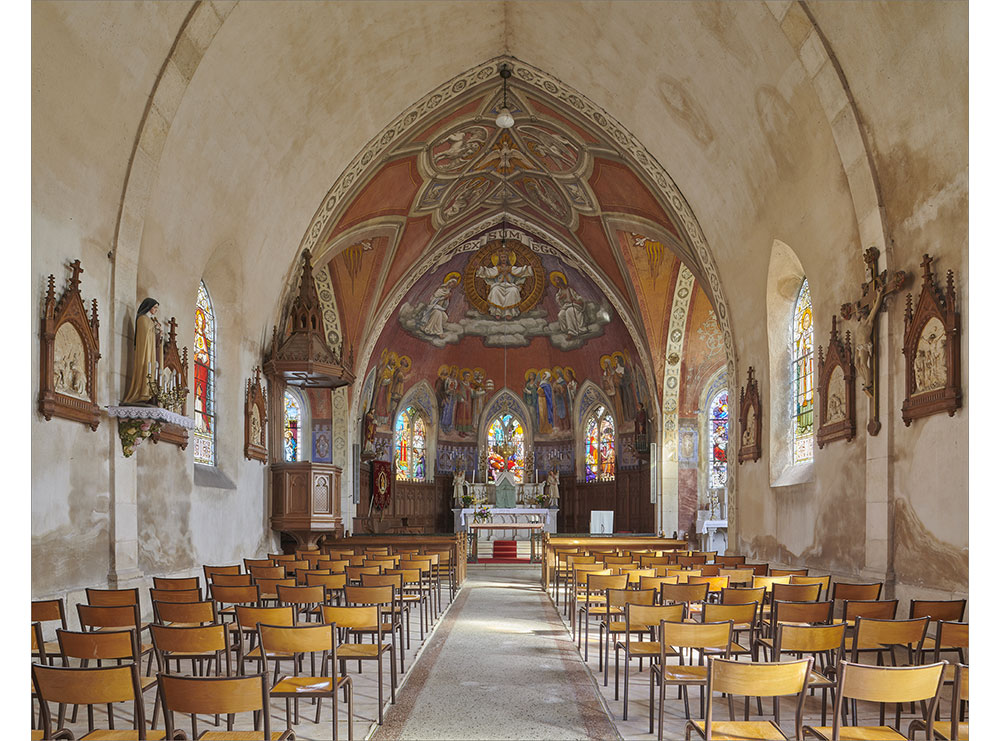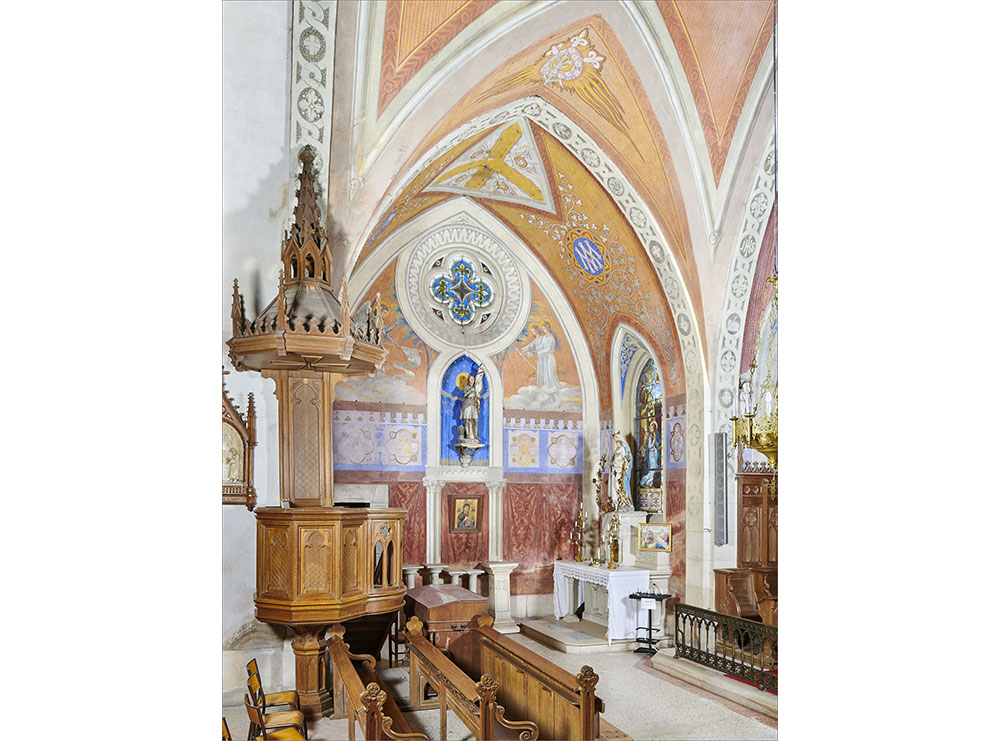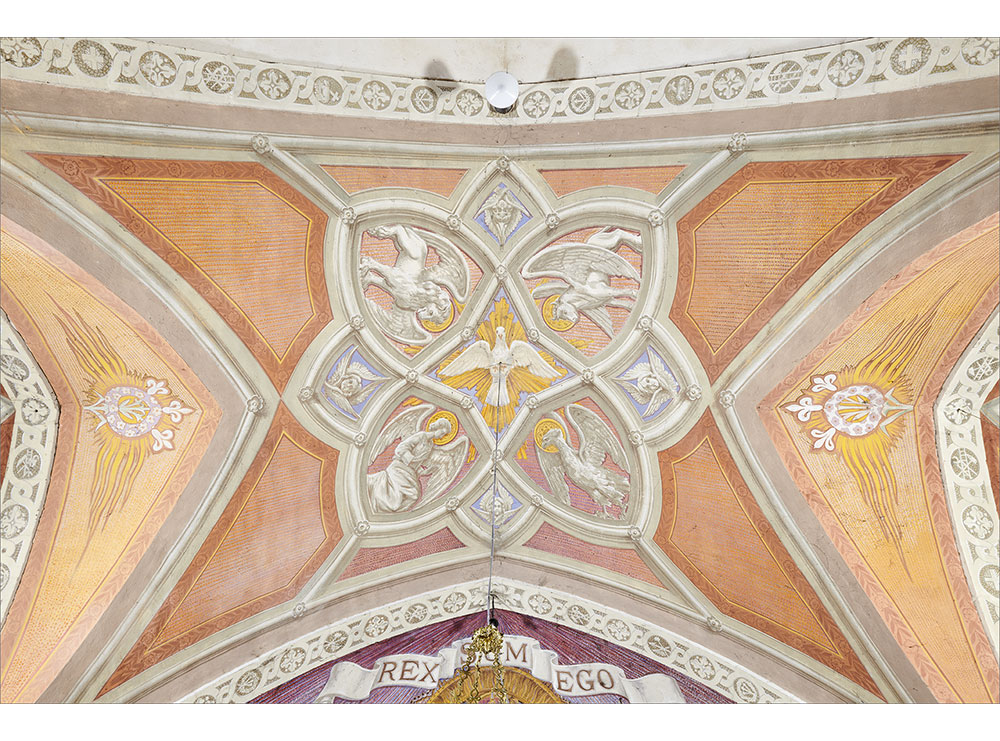Rouvrois-sur-Meuse, Church of St Lawrence
The Church of St Lawrence was completely rebuilt to replace the previous church by the architect Ernest Poncet, who drew up the plans that were approved in 1925. In 1931, the Cooperative Society for the Reconstruction of Churches asked Duilio Donzelli to decorate the choir and the side chapels. There is a striking contrast between the nave, which was left bare, and the part of the transept and the choir that is decorated with paintings in red-orange tones which give the building a special glow and a lot of light.
For the choir, the plan included decoration “depicting Christ the King surrounded by the Holy Virgin and St John the Baptist on the upper part, and the Court of the Saints in the lower part. In total, 17 figures.” In accordance with the order, Donzelli decorated the apse with a scene of deesis: in a mandorla, Christ shows his stigmata. Echoing the inscription above his head, “I am King” (“REX SUM EGO”), he sits on a throne and wears a crown. This depiction, which is similar to that of Christ in the apse of the church of Dieue-sur-Meuse, is a reference to the feast of Christ the King, which was instituted in 1925 by Pope Pius XI to affirm and honour Christ’s royalty. Beneath this scene, seven male saints on the left and seven female saints on the right who are identified by the names on their haloes are shown; among them are St Lawrence with a gridiron, the patron saint of this church, St Eligius with his workbench, the patron saint of blacksmiths, St Veronica presenting the Holy Shroud, and St Agnes carrying lambs, a reference to her first name. The arms of the transept contain altars dedicated to the Virgin on one side (to the north) and St Joseph on the other (to the south). So the decoration is in keeping with these figures: the virtues of St Joseph and certain litanies of the Virgin are illustrated. However, in the north transept, which is dedicated to the Virgin, the apparition of St Michael, St Catherine and St Margaret to Joan of Arc was painted: tradition has it that they commanded her to lead the Dauphin to Reims and gave her weapons to her. The crossing is decorated with a Tetramorph, as in Kœur-la-Grande, and the intrados of the arches bears various Christian symbols (“IHS”, chalice and host, Mystic Lamb, Sacred Heart and instruments of the Passion). The whole forms a harmonious ensemble which is rich in symbols and theological teachings.
Deesis: from the Greek meaning “prayer”, this is a Christian theme represented in art where the Virgin Mary and St John the Baptist are shown on either side of Christ and pray for the salvation of mankind.
Halo: circle or disc of light surrounding the head of holy figures, deified heroes, God or saints.
Holy shroud: Piece of cloth with which Veronica wiped Jesus’s face when he went up to Calvary.
IHS: abbreviation and imperfect transliteration of the name “Jesus” in Greek, which was later used within the Church as a monogram for Iesus Hominis Salvator, which means “Jesus, saviour of men”.
Instruments of the Passion: objects that caused suffering to Christ: column, crown of thorns, hammer, nails, pincers, lance, sponge, cross, etc.
Intrados: inner and concave surface of a vault, arch or curve.
Litanies: prayer made up of a lengthy series of petitions to the Virgin Mary which are said by the celebrant and followed by a formula which is recited or sung by the congregation. Each petition mentions a religious quality and a title of Mary.
Mandorla: geometrical figure resembling an almond; oval inside which holy figures are depicted in majesty.
Mystic Lamb: symbol of Christ that recalls Christ’s sacrifice and the words of John the Baptist: “Behold, the lamb of God, who takes away the sin of the world” (John 1:29).
Tetramorph: a representation of the four evangelists in their allegorical form (man for Matthew, an eagle for John, a bull for Luke and a lion for Mark) which is inspired by Ezekiel’s vision (Ez 1:1-14) and the description of the four living beings of the Revelation





